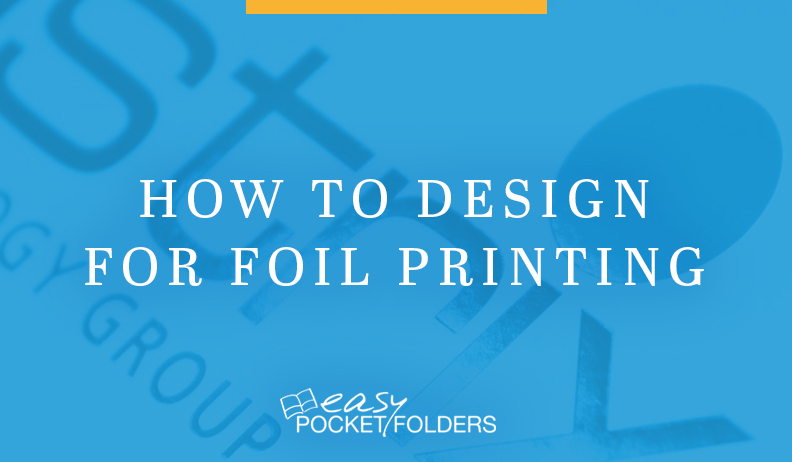Foil printing—or foil stamping or foil imprinting as it’s also called—is a classic personalization technique for greeting cards, food packaging, book covers, branded giveaways, business presentation folders, and more.
But designing a logo or graphic for foil stamping is a bit different than designing for a full-color printed product.
If you’ve never designed artwork for foil stamping, we have some tips to help get you started.
Negative space vs. positive space in foil printing
When designing for foil stamping, you need to think in terms of negative space and positive space.
Or, more simply put, think in black and white.
Let’s look at a few examples. Like this bulldog dressed as a bumblebee (why not?).

If this cute pooch was your logo, we could print it in full-color, as-is, on any of our presentation folders.
But let’s say you want him looking a but more classic. So you choose foil printing. If we were to stamp your image as-is, this is what it would look like:

Not great, huh? Let’s fix it. In order to create stamp-able art that conveys your brand’s image, you need to create negative and positive spaces. Below, the white spaces are the negative spaces (those won’t be foil stamped), and the black spaces are the positive spaces (those will be foil stamped).

Three tips for designing a logo for foil stamping
If you’re starting from scratch—whether it’s a re-brand or an entirely new one—you need to consider how your logo will look in various mediums. How will it look on your website, your van, a t-shirt, or a presentation folder? Here are some things to keep in mind when designing your logo:
1. Simple is better.
If you’re working with a designer who’s well-versed in logo design, they can capture your brand’s image easily in a small illustration, or even just in text.
For example, look at these two logos. On the left is a complex logo, the right, a simple. Which logo will look best when foil printing really big OR really small?

Simple logo designs are best because those translate well to any size or advertising medium.
Here are some ways to keep your logo design simple for foil imprinting:
- Avoid fine lines. Small lines don’t imprint well. In fact, they often don’t imprint at all!
- Keep image details to a minimum. Give your audience just enough to identify what your logo image means, but not too much so you overwhelm them.
- No small text. Just like fine lines don’t imprint well, small letters won’t read well. For example, the inside of a “B” could fill in.
2. When designing your logo, design it in black and white first.
To ensure that your logo will imprint well, design it in black and white from the start of your project. After you like the shape and form of your logo, then add colors.
3. Ask your designer for a vector logo.
Why do you need a vector logo for foil stamping?
Vector images are designs that are based on proportions, meaning they can be sized as big or small as you need. Vector images are also made of shapes, which means we can select parts of your logo.
With raster images, everything is flattened. Raster images are pixel-based, which means they are made up of lots of tiny squares. This means they can only be enlarged so much.
Not clear? Let’s compare vector vs. raster images to a pumpkin vs. a pumpkin pie.

If someone hands you a pumpkin pie, you are going to eat pumpkin pie.
If someone hands you a pumpkin, you could make a pumpkin pie out of it… or you could carve it, make cookies, or even make soup. The possibilities are as endless as Martha Stuart’s culinary imagination.
Raster images are the pumpkin pie. We are limited in what we can do with them. Vector images are the pumpkin. Yes, we could make the pie, but we can also do a lot more with it.
In short, vector images produce cleaner imprints, which means your finished product will look better—and more professional.
Need some help with your foil stamped logo?
We specialize in foil stamping presentation folders. If you need branded folders for your business, and would like to put your logo on the front cover, talk to us! We’ll look at your logo and see if we can make it work—all at no extra cost to you.
Ready to create custom branded pocket folders? We have some pocket folder design tips for you.

